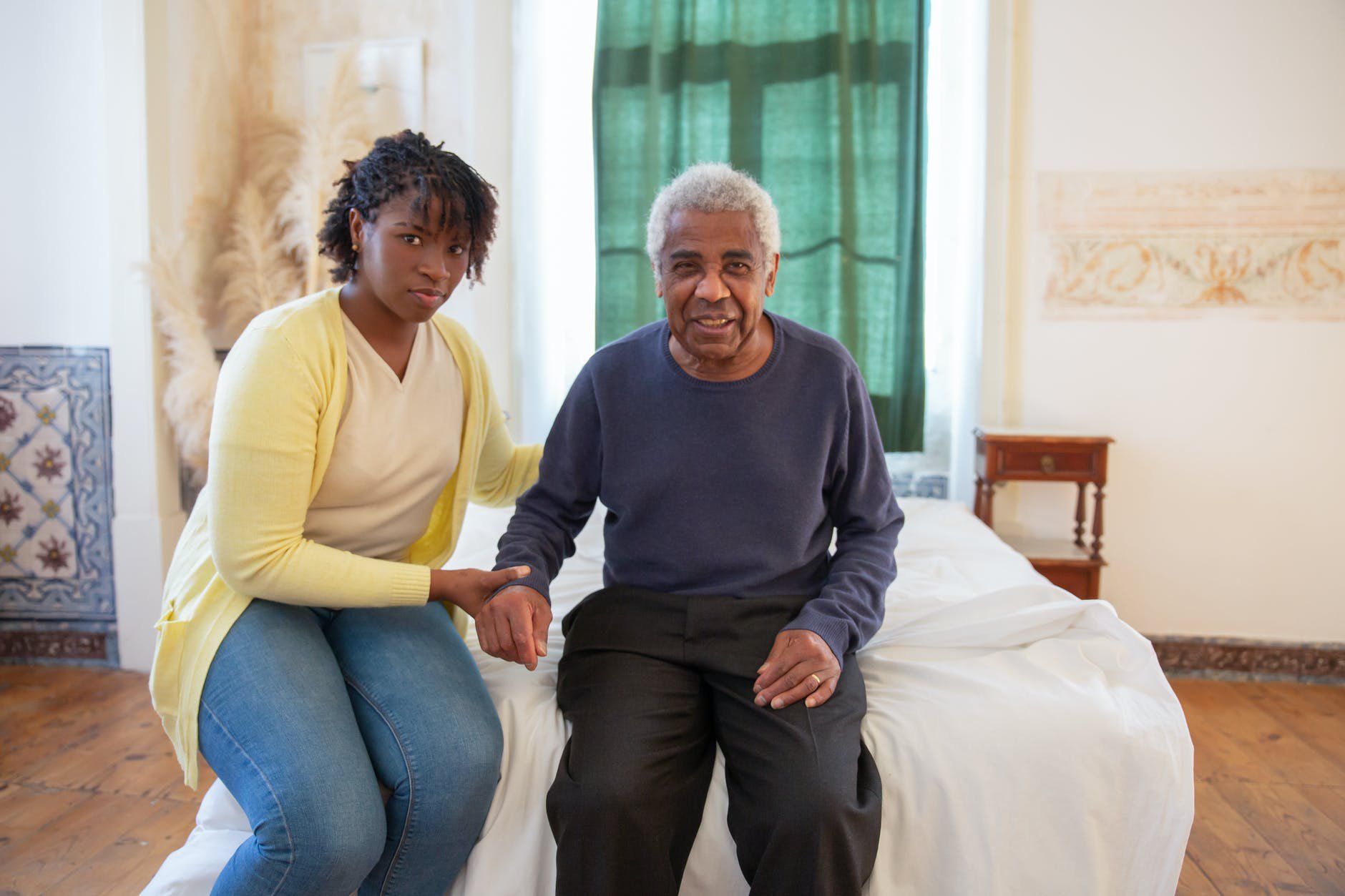Therapeutic Communication Techniques: How Good Nurses Can Provide Better Patient Care for Best Results

Nurses are the health providers who spend the most time with patients. From when a patient enters the hospital, nurses are there every step of the way through all the procedures and treatment plans and up to their discharge. They provide care, attention, relief, information, and empathy.
Efficient nursing care builds its foundation on therapeutic communication, a vital skill for aspiring nurses, new nurses, experienced nurses, nurses working by the bedside or away from it, telehealth nurses, home health nurses, RNs working in the Emergency Department or any other unit. Regardless of the nursing position or their level of expertise, therapeutic communication is at the heart of all successful nursing practices.
This article will explore therapeutic communication in nursing: what it is, its benefits, and why all nurses should strive to possess this valuable skill. Moreover, we’ll share essential therapeutic communication techniques to help nurses provide excellent, efficient care to their patients.
What is Therapeutic Communication?
Therapeutic communication in nursing consists of an exchange between patient and nurse using verbal and non-verbal cues. It’s a process in which the healthcare professional consciously uses specific techniques to help patients better understand their condition or situation. At the same time, they also encourage patients to freely express their ideas and feelings in a relationship of mutual respect and acceptance.
The main goal of this communication style is to help patients get through emotional and/or psychological distress. Thus, it’s an invaluable approach to patient interactions, making it one of the most important tools in a nurse’s toolbox.
The concept of therapeutic communication is by no means a new one. Its benefits have been acknowledged for centuries. In the late 1800s, Florence Nightingale was one of the first to endorse the importance of communication that develops between nurse and the patient. In more recent times, multiple studies have corroborated the importance of the practice.
In the following section, we will discuss the benefits of therapeutic nursing communication.

What Are the Benefits of Employing Therapeutic Communication?
According to the definition, therapeutic communication aims to advance the physical and emotional well-being of a patient. This is one of the fundamental benefits of this type of interaction: it contributes to healing.
Among other characteristics of therapeutic nursing communication, others worthy of mentioning are:
- The process of communicating therapeutically leads to more accurate diagnoses.
- Identifying the patient’s needs and emotions can increase collaborative decision-making with patients.
- The quality of communication is directly related to the patient’s adherence to treatment. Thus, the chances of a patient following treatment plans are higher when there is efficient communication, leading to better patient outcomes.
- Patient-centered encounters informed by therapeutic communication have shown improved patient and nurse satisfaction. Consequently, they lead to a reduced risk of malpractice and decreased levels of nurse burnout.
Find out more ways to fight nurse burnout.
Essentially, therapeutic communication makes the difference between basic nursing care and quality nursing care. While every nurse has to communicate with patients, RNs who employ therapeutic communication techniques will provide education and support to patients while also being objective and empathetic.
Suppose a nurse has to draw blood from a patient. Standard communication would require the nurse to describe the procedure briefly and then move on. However, in the same scenario with therapeutic communication, the nurse would take the time to talk to the patient about their concerns, reluctance, or worries. They would explain the procedure while also ensuring the patient is heard, their emotions validated, and their viewpoints respected.
The respectful and compassionate nature of therapeutic communication will help patients open up more about their needs, their physical, mental, and emotional wellbeing. It also encourages them to share how effective the treatments are, potential side effects, and so much more.

What are some Therapeutic Communication Techniques?
So far, we have discussed what therapeutic communication is and its tangible benefits. Now, we’ll delve into actual techniques that nurses can implement on a daily basis to provide better care for their patients.
Nurses may use a wide variety of approaches to engage in therapeutic communication. Below, you’ll find a list of the most important ones, as well as examples and different scenarios on how to employ them.
Active Listening
Listening actively implies paying careful attention to what the patient is saying, with words and gestures, facial expressions, and other body language signs. You should sit facing the patient, lean slightly towards them, have an open posture, and make eye contact. It’s also helpful to provide nonverbal feedback. A slight nod or smile will make the patient feel listened to.
Sharing Observations
As a nurse, you should be mindful of your patient’s actions, mood, or looks as sometimes these can give you clues about their condition, how well they’re responding to treatment, and so on. For instance, if you see a patient looking more tired than usual or if you notice them skipping meals, you can share these observations with them.
Sharing Empathy
Putting yourself in someone else’s shoes and trying to understand and accept their feelings and reality is an important skill for a nurse. An example of therapeutic communication using empathy might be: “I understand how difficult this must be. We’ll try to get to the bottom of this and do everything we can to have you up and running again soon.”
Sharing Humor
Sometimes, it’s helpful for patients to forget, even for a brief second, about the condition, the pain, or the diagnosis that brings them to the hospital. A little bit of humor used appropriately can bring about positive emotions and establish a good relationship between nurse and patient. Laughter catalyzes feelings of togetherness, closeness, and friendliness.
Sharing Feelings
Another therapeutic communication technique nurses can use is encouraging patients to express their feelings and emotions. RNs should create a safe space where patients can express their feelings or frustrations. Nurses can guide patients through healthier ways to deal with anger and pain, and communication plays a big part.
Using Silence
Therapeutic communication is as much about knowing when to stay silent as learning when and what to speak. A good nurse will know when to give the patient time to work through their emotions, process information, or observe what is happening in their environment. In most cases, it should be the patient who breaks the silence.
Using Touch
Touch is perhaps the most powerful form of therapeutic communication. Comforting gestures, such as holding the hand of a patient who is experiencing grave illness, can help them feel some peace or optimism when they need it most.

Providing Information
An essential part of a nurse’s job description revolves around educating and informing patients and/or their families. But there’s a difference between “I need to do an electrocardiogram because you have tachycardia” and “I have to get you an electrocardiogram, which is a painless test that uses sensor patches which I attach to your chest to see the timing and duration of your heartbeats. We have to do the test because the heart rate monitors show you have tachycardia.”
Clarifying
The clarification process in nursing therapeutic communication could go one of two ways. Either the nurse isn’t sure or clear on something the patient says. Hence, she kindly asks the patient to clarify the ambiguous statement, or the nurse provides some information to the patient that the receiver doesn’t completely understand. For instance, if the patient isn’t sure what “tachycardia” is, the RN can further clarify: “It just means that your heart rate is elevated and your heart is beating too fast”. On the other hand, if the patient says: “I feel worse than I did this morning,” the nurse would have to clarify how their symptoms changed and what exactly the patient means by “feeling worse.”
Asking relevant questions
Decision-making is an integral part of a nurse’s job. In order to make good decisions for good patient outcomes, RNs have to obtain relevant and encompassing information. Some tips in this direction would be to not overwhelm the patient with too many questions at once. Ask one question at a time and make sure you explore a topic well enough before moving to something else.
Summarizing
The patient will generally find it helpful to receive a brief summary of nursing interactions and procedures. All the most critical information in an easy to digest, remember, and follow format.
Confronting
This particular therapeutic communication technique requires a lot of skill and sensitivity because you don’t want to appear offensive or attacking. However, the patients will display inconsistencies in their attitudes or behaviors in certain situations. For instance, they might refuse a course of treatment to which they had previously agreed. In those moments, if you have established trust with the patient, you can delicately confront them about their choices.
Focusing the conversation
Sometimes, the patient may go off-topic and try to tell you their entire life story when your initial question was about the symptoms they’re experiencing. Respectfully, it would be best if you steered the conversation back into focus. Another way to employ this technique of therapeutically communicating is when a patient mentions in passing a detail that you find relevant. Then, you can zoom in on that detail and focus the conversation on what you find suitable from a nursing perspective. For example, suppose a patient passingly mentions they feel some pain. In that case, you may think it relevant to focus on this detail and ask “On a scale from 1 to 10, how bad is the pain you’re experiencing?”
Exploring
Exploring is essentially a method of asking follow-up questions without giving the patient the impression that you’re probing. When a patient gives you vague or ambiguous answers or when you want to obtain more specific or in-depth information, that’s when you should consider an exploratory approach. At the same time, make sure the patient isn’t uncomfortable in the process.
Paraphrasing
This therapeutic communication technique entails taking what the patient has said and trying to express it in your own words. It’s an excellent way to clarify the patient’s meaning. It might be useful to ask the patient if you understood correctly and your paraphrasing fits their initial statement.
Restating
Although this is also a clarification technique, restating is slightly different from paraphrasing. When attention to detail is of utmost importance, you might have to resort to this nursing therapeutic approach, by which you repeat back to the patient what they said to you. Asking “Did I summarize what you said correctly?” is an efficient way to round off this method.
Providing leads
Sometimes when interacting with a patient, you might be pursuing specific information. Specific, open-ended questions, otherwise known as leads, can be a productive way to get the details you need for offering the best possible care to your patient.

How to Develop the Skills Needed for Therapeutic Communication Techniques?
Utilizing these types of therapeutic communication in everyday practice requires mastering some skills. In this section, we’ll explore the skills needed to excel at therapeutic communication:
Pay attention to body language
Sometimes body language will reveal as much, if not more than verbal communication. The patient could be in extreme pain but too proud to admit it. They could come in complaining about pain in their arm, but careful examination of their body language can pinpoint you in the direction of some underlying issue. You can pick up on these slight clues if you pay attention to body cues.
Make time
Nurses are busy and have to juggle many tasks, sometimes to the point of being overworked. It might be easy to fall into the trap of taking shortcuts in practice, and quality therapeutic communication takes more time than basic care. But it pays off. In order to form relationships with your patients, gain their trust, and be able to help them more, you need to dedicate time and be fully present whenever you enter a patient’s room. Making time is part of what makes you a great nurse.
If you feel like you don’t have enough time and you feel stressed and overwhelmed, you might be experiencing nursing burnout. Learn more about what it is and how to combat it in our article.
Encourage communication
Communication is always a two-way street. Your patients need to know that you will listen actively to their concerns; they should feel safe to talk to you, knowing that you’ll respect their beliefs and wishes.
Focus on the patient
Therapeutic communication is about the interactions between nurse and patient during which the nurse focuses on the patient’s needs, emotions, and feelings. Thus, it’s essential to keep the patient at the center of the experience. Try not to multitask when you’re engaging with a patient. Do your best to understand and empathize with the patient’s experience.
Use open-ended questions
Open-ended questions are your friend. They invite more detailed answers and encourage the patient to give more information about their emotions and behaviors. They are often associated with developing trust, seeming less threatening, and stimulating free responses. Of course, open-ended questions alone won’t get the job done. That’s why nurses skilled in therapeutic communication know the right moment to ask closed or open-ended questions to get the correct information and build a better rapport with the patient.
Offer self
In the process of caring for patients, a tremendous impact can be made by offering yourself – your time, your empathy, perhaps a personal anecdote or story from your own experience. All of these little details can make the patient feel better. If they’re lonely, you can offer to stay for lunch; if they’re bored, you can bring their favorite movie; if they’re stressed, you can talk with them until their mood improves. In any of these situations, you show that you are also human, not only a nurse, and that’s why offering self is one of the most potent forms of therapeutic communication.
Mastering all these techniques of therapeutic communication is not the only way for you to improve your nursing skills. Find more tips on becoming a better nurse and reaching your full potential in nursing practice.

Nontherapeutic Communication Techniques
The opposite of therapeutic communication styles, the non-therapeutic techniques can be seen as blocks to the communication of feelings and ideas.
Changing the subject
Abruptly and callously changing the subject may show a lack of empathy on your side and discourage the patient from engaging in conversation with you. Instead of saying “Your insurance is not important now; it’s time for your lunch,” you could try “First have some lunch, and then we can talk about what’s going on with your insurance.”
Being defensive
Patients won’t always be a picture of satisfaction. They may complain, criticize, or find faults (whether or not they are real). If they do, you shouldn’t get defensive. Listen uncritically and try to get to the root of their dissatisfaction. In most cases, the underlying issues will run much deeper than the fact that you were a few minutes late for the scheduled walk.
Giving false Reassurances
Sometimes false reassurances like “Everything will be alright” or “You’ll be fine” stem from a good place. All you want is to be kind and help the patient feel a little better. But the result won’t always be the anticipated one. The patient may feel discouraged to express their feelings further when they are met with such comments, or they may end up having false hope. Either way, more harm than good is done, so try to steer clear of giving false reassurances.
Judging people
The relationship between nurse and patient should always be non-judgemental, open, and honest. Bringing your judgments into your conversation, either positive or negative, is not a therapeutic way of interacting with patients.
Stereotyping your patient
Stereotyping is one of the most hurtful things you can do as a nurse. It is a barrier to efficient communication. Even more so, it prevents you from nurturing interpersonal relationships with your patients.

Are You Ready to Employ Therapeutic Communication Techniques in Your Nursing Practice?
Nursing care is one of the cornerstones of efficient healthcare. In its turn, therapeutic communication is central to nursing practice. That’s why all nurses should strive to be as proficient in therapeutically engaging with their patients as they are in clinical skills. Everyone stands to win as a result.

